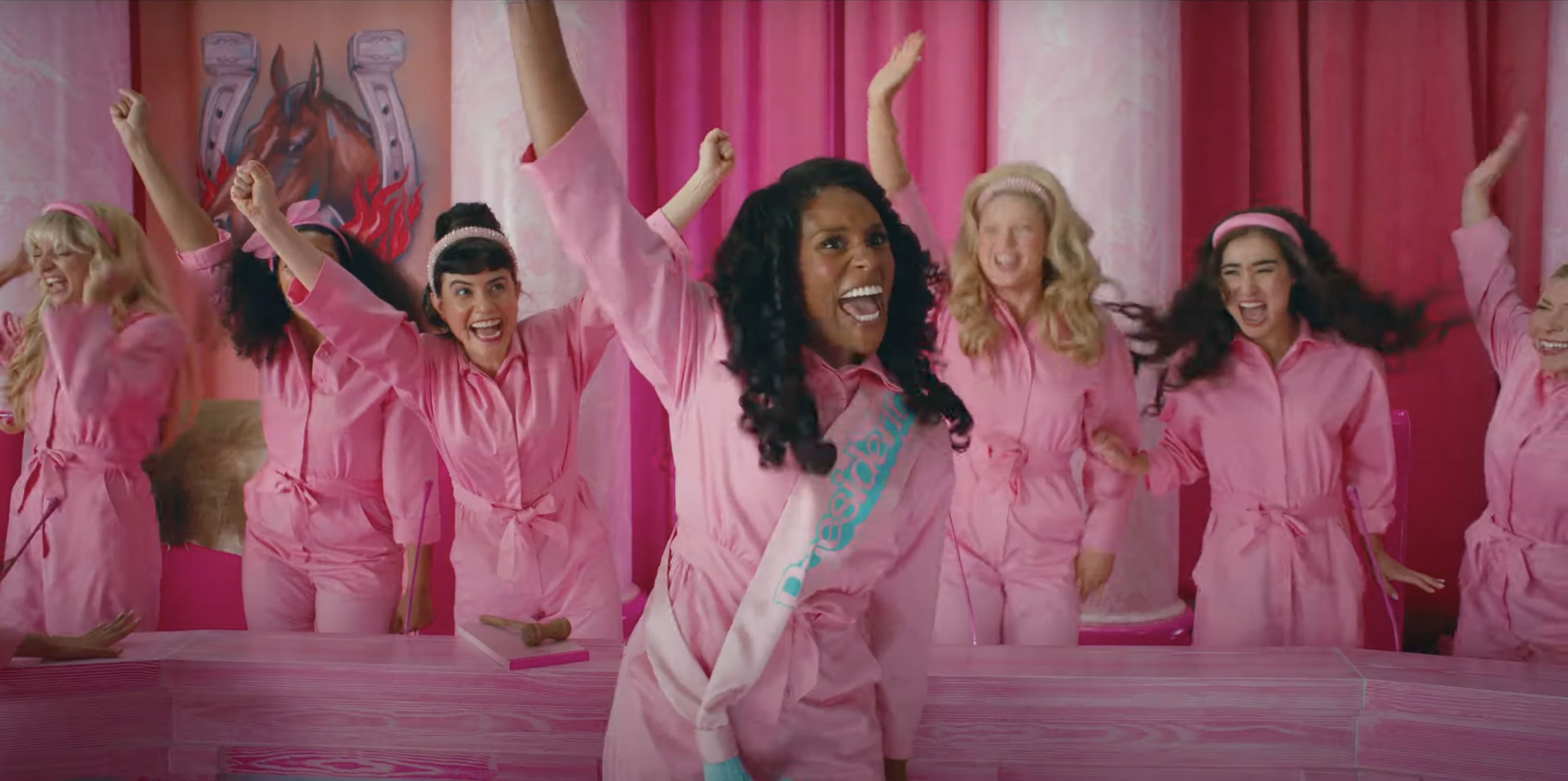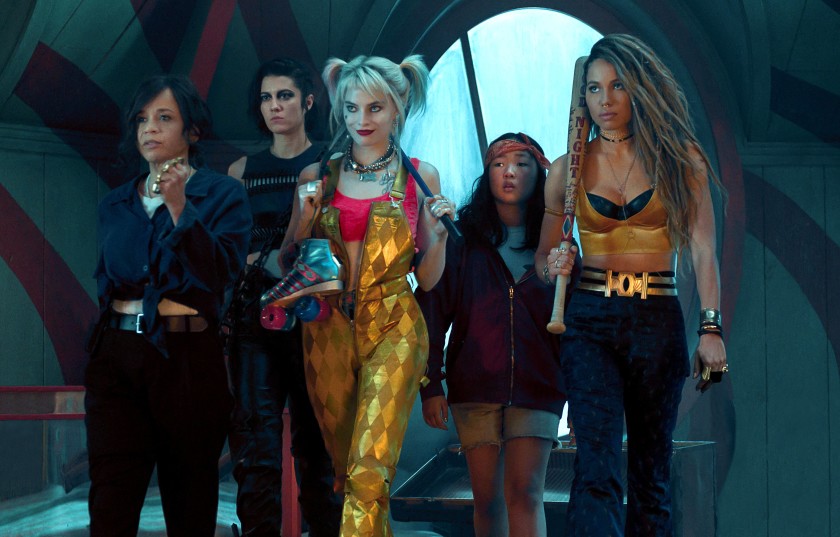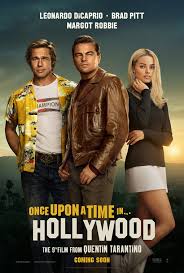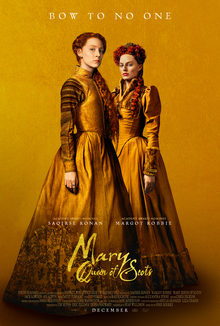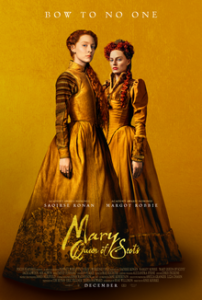Barbie
Posted on July 18, 2023 at 7:15 pm
A-| Lowest Recommended Age: | Middle School |
| MPAA Rating: | Rated PG-13 for suggestive references and brief language |
| Profanity: | One bleeped strong word |
| Alcohol/ Drugs: | Kens drink a lot of "brewski" |
| Violence/ Scariness: | Fantasy peril, no one hurt |
| Diversity Issues: | Diverse characters |
| Date Released to Theaters: | July 21, 2023 |
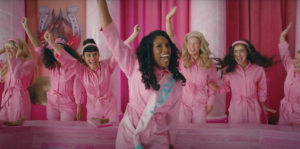
This film begins with all of the fun of Barbie world, as we meet “stereotypical” or original Barbie (Margot Robbie), whose life is one perfect day after another. She wakes up in her Barbie dream house, enjoys her pretend breakfast, then stops by the beach, where the Kens hang out (their job is “beach” — not lifeguard, not surfer, just beach). She believes that the Barbies took over from the centuries-old tradition of giving little girls baby dolls, so they could pretend only to be mothers and housewives, the chance to play with adult woman dolls mastering every profession led to unobstructed opportunity and accomplishment in the real world. In Barbie world, everything is pink and pristine, and everyone (almost) is a Barbie or a Ken. The Supreme Court is all Barbies. Construction crews are all Barbies. President Barbie (Issa Rae) presides in a pink version of the White House. The Barbies love to have girls’ night sleepovers and huge parties with choreography. Kens are just there to admire and support the Barbies. Ryan Gosling plays the Ken who lives for the brief moments each day when Barbie notices him.
Every day is the same and every day is perfect…until one day things start to go wrong. Barbie starts to ponder the prospect of death. Just as disturbing, her perfectly arched, high-heel-ready feet are suddenly FLAT!! She visits Weird Barbie (no one does weird better than Kate McKinnon), who offers her the red pill/blue pill option: does she want to stay in blissful ignorance or does she want to visit the real world, where the dark thoughts of the person playing with the doll are coming from.
And so Barbie and Ken find themselves rollerblading on a real beach, and immediately getting into trouble. For all of her consumer purchases, Barbie does not have any money. When they escape the real world and get back to Barbie world and bring that trouble with him. Ken has learned about the patriarchy and likes the idea of men running everything. The Barbies have never had to face a challenge like that. Will the Kens take over Barbie world?
The cinematography by Rodrigo Prieto and production design by Sarah Greenwood make Barbie world enticing and Robbie and Gosling inhabit their roles with endless charm that almost disguises the precision of their craft. This is not a parody or a high satire. The terrific screenplay skillfully mixes the silly with the heartfelt and the actors deliver with every shift.
Adorably, Gerwig and Baumbach bring in some of the most strange and esoteric aspects of real-life Barbie history and as we see in the closing credits all of it is real. Michael Cera plays Allan, based on a briefly available friend for Ken. We also see the pregnant Midge, the Barbie who is also a camera, and pubescent “Growing Up Skipper.” And we get a monologue from working mother Gloria (America Ferrara) that ties together the crushingly unrealistic expectations of women that Barbie represents and perpetuates. And narration from Dame Helen Mirren is a lovely touch. The Barbies and Kens are diverse in race and body type, with Simu Liu and Rae so good they left me wishing for a spin-off. The movie comes down on the side of heart and brain, fantasy and reality, and, of course, the Indigo Girls.
There’s more than one answer to these questions
Pointing me in a crooked line
And the less I seek my source for some definitive
Closer I am to fine.
Parents should know that this movie is not for children. There are references to the dolls’ lack of genitals and some mild sexual references, Kens drink a lot of beer, and there is a bleeped out bad word. More important, the film deals with issues of purpose and meaning and struggle that younger viewers may find troubling.
Family discussion: Have you ever played with a Barbie? If not, why not and if so, which Barbie did you like?
If you like this, try: Forever Barbie, a terrific history of the doll, and Barbie and Ruth, the story of the real-life Ruth Handler, played by Rhea Perlman in the film

